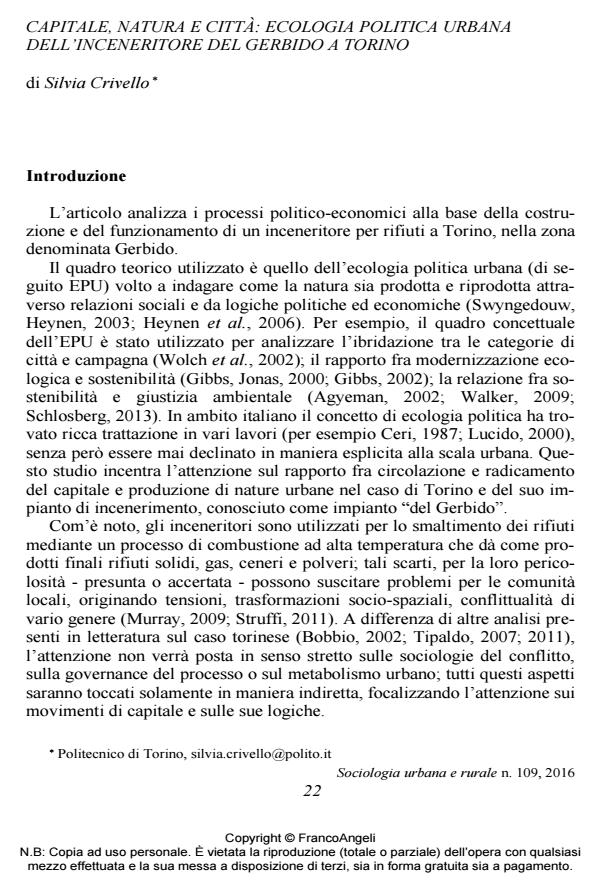Capitale, natura e città: ecologia politica urbana dell’inceneritore del Gerbido a Torino
Titolo Rivista SOCIOLOGIA URBANA E RURALE
Autori/Curatori Silvia Crivello
Anno di pubblicazione 2016 Fascicolo 2016/109
Lingua Italiano Numero pagine 18 P. 22-39 Dimensione file 516 KB
DOI 10.3280/SUR2016-109003
Il DOI è il codice a barre della proprietà intellettuale: per saperne di più
clicca qui
Qui sotto puoi vedere in anteprima la prima pagina di questo articolo.
Se questo articolo ti interessa, lo puoi acquistare (e scaricare in formato pdf) seguendo le facili indicazioni per acquistare il download credit. Acquista Download Credits per scaricare questo Articolo in formato PDF

FrancoAngeli è membro della Publishers International Linking Association, Inc (PILA)associazione indipendente e non profit per facilitare (attraverso i servizi tecnologici implementati da CrossRef.org) l’accesso degli studiosi ai contenuti digitali nelle pubblicazioni professionali e scientifiche
Attraverso l’utilizzo del quadro teorico dell’ecologia politica urbana, l’articolo analizza i processi politico-economici alla base della costruzione dell’inceneritore per rifiuti del Gerbido a Torino. L’analisi ricostruisce le relazioni fra i flussi economici, il radicamento del capitale nel territorio e la produzione di nature urbane, mettendo in evidenza le strette interrelazioni fra logiche capitalistiche e produzione di spazi urbani.
Parole chiave:Ecologia politica urbana, città, natura, inceneritore, Gerbido, Torino.
Silvia Crivello, Capitale, natura e città: ecologia politica urbana dell’inceneritore del Gerbido a Torino in "SOCIOLOGIA URBANA E RURALE" 109/2016, pp 22-39, DOI: 10.3280/SUR2016-109003